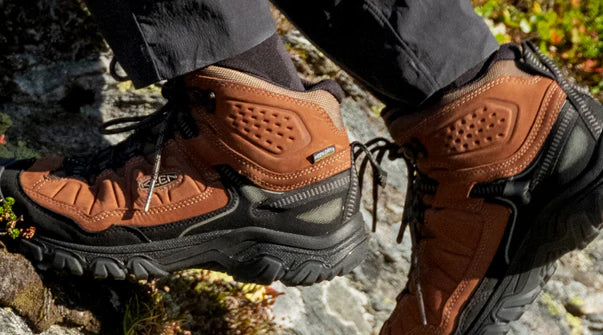Tick Safety: Protecting Yourself from Tick-Borne Illnesses
Tick Safety: Protecting Yourself from Tick-Borne Illnesses
Ticks are prevalent in Nova Scotia, and while there are several types, it's the blacklegged tick that poses the greatest threat as it carries the bacteria responsible for Lyme disease. These tiny parasites thrive in moist and humid environments, commonly found in or near woods, shrubs, leaf litter, long grass, urban parks, and gardens. Their small size makes them difficult to detect, and their bites are painless, making it challenging to realize when you've been bitten.
However, tick-borne illnesses are preventable with simple precautions. By following these guidelines, you can be on the safe side and enjoy outdoor activities with peace of mind.
- Reduce Your Risk:
a) Wear protective clothing: When venturing into tick-prone areas, wear long pants and long sleeves to minimize exposed skin. Opt for light-colored clothing, as ticks are easier to spot against a light background. Additionally, wear enclosed shoes and tuck your pants into your socks to create a barrier.
b) Choose well-traveled paths: Stick to well-traveled paths and avoid walking through long grass and dense vegetation where ticks are more abundant.
c) Use insect repellents: Apply insect repellents containing DEET or Icaridin to exposed skin and clothing. Follow the instructions on the package carefully. Alternatively, consider using permethrin-treated clothing, which repels and kills ticks upon contact. This product is now approved for use in Canada for individuals aged 16 and older.
- Check for Ticks:
Img Source: https://novascotia.ca/ticksafety/
a) Perform regular tick checks: After spending time outdoors, thoroughly check yourself and your family members for ticks. Taking a bath or shower within two hours of coming inside makes it easier to spot ticks and wash off any unattached ones.
b) Inspect common tick hiding spots: Ticks tend to seek warm areas on the body. Remember to check around the ears, behind the knees, in the hair, between the legs and groin area, and around the waist.
c) Tick-check routine for pets: If you have pets that spend time outside, make tick-checks a part of your daily routine. While dogs cannot transmit tick-borne illnesses to humans, ticks can latch onto pets and find their way into your home.
d) Treat outdoor clothing: Put your outdoor clothes in a dryer on high heat for at least 10 minutes to kill any remaining ticks.
- Safe Tick Removal:
a) Use tweezers for removal: Carefully grasp the tick with a pair of tweezers, preferably with a pointed end, as close to the skin as possible.
b) Gently and slowly remove the tick: Pull the tick straight out of the skin without jerking, twisting, or squeezing it.
c) Clean the bite area: Once the tick is removed, clean the bite area with soap and water or an alcohol-based hand sanitizer.
d) Note the bite details: Make a note of the date and the location on the body where the bite occurred. This information is important if you or a loved one begins to experience any symptoms.
- Proper Disposal of Ticks:
a) Safely dispose of ticks: Once the tick is removed, flush it down the toilet, drown it in rubbing alcohol, or freeze it in a sealed plastic bag before putting it in the garbage. Avoid crushing ticks with your bare fingers to minimize the risk of contact.
- Tick Identification:
a) Use eTick.ca for identification: If you need assistance in identifying a tick, visit eTick.ca for more information.
- Recognizing Lyme Disease Symptoms:
Lyme disease is primarily transmitted by blacklegged ticks, and in most cases, the tick must be attached and feeding for at least 24 hours to transmit the bacteria. If you experience any of this Symptoms:
- Rash (sometimes shaped like a bull's eye)
- Fever
- Fatigue
- Muscle aches
- Joint pain
- Headaches
Here is the link to the Atlantick Collection with more products
For more information check https://novascotia.ca/ticksafety/











